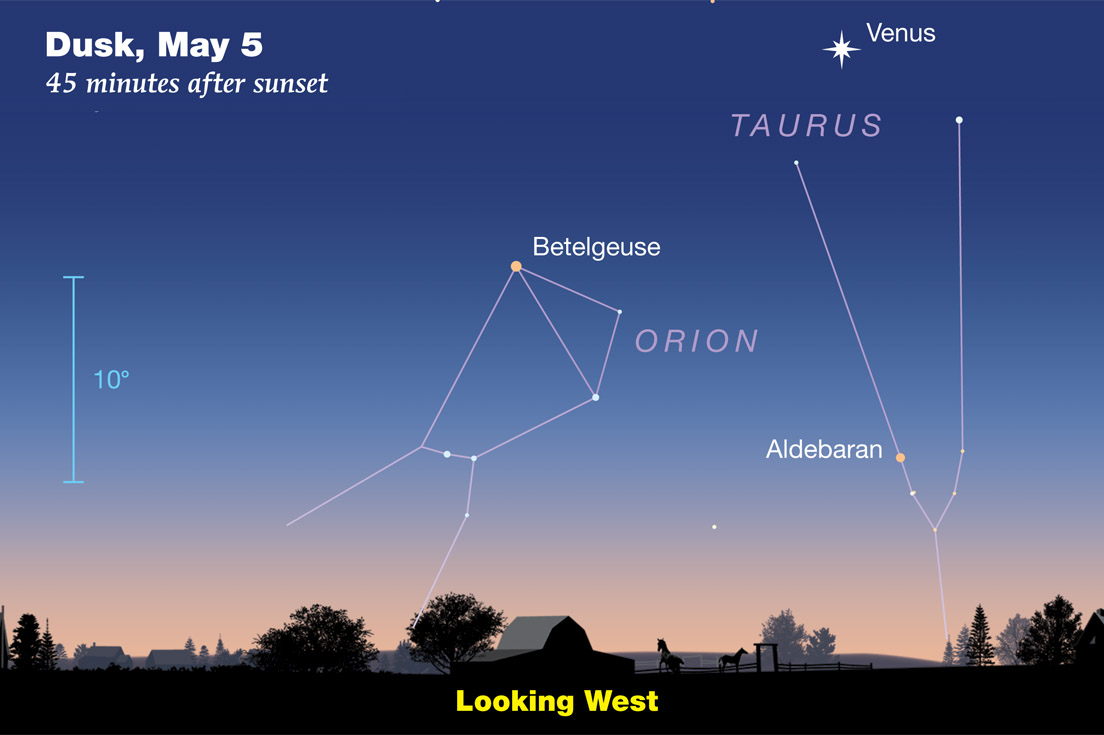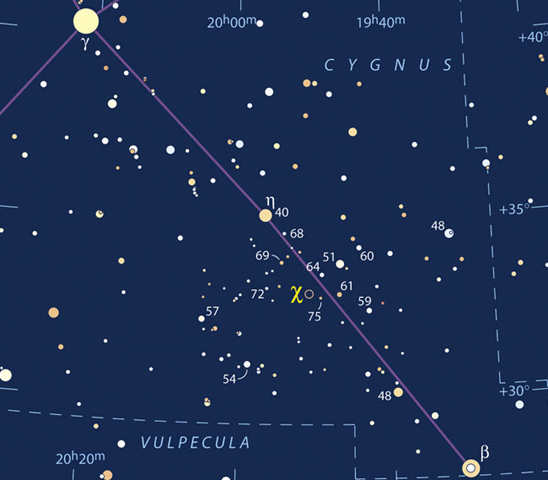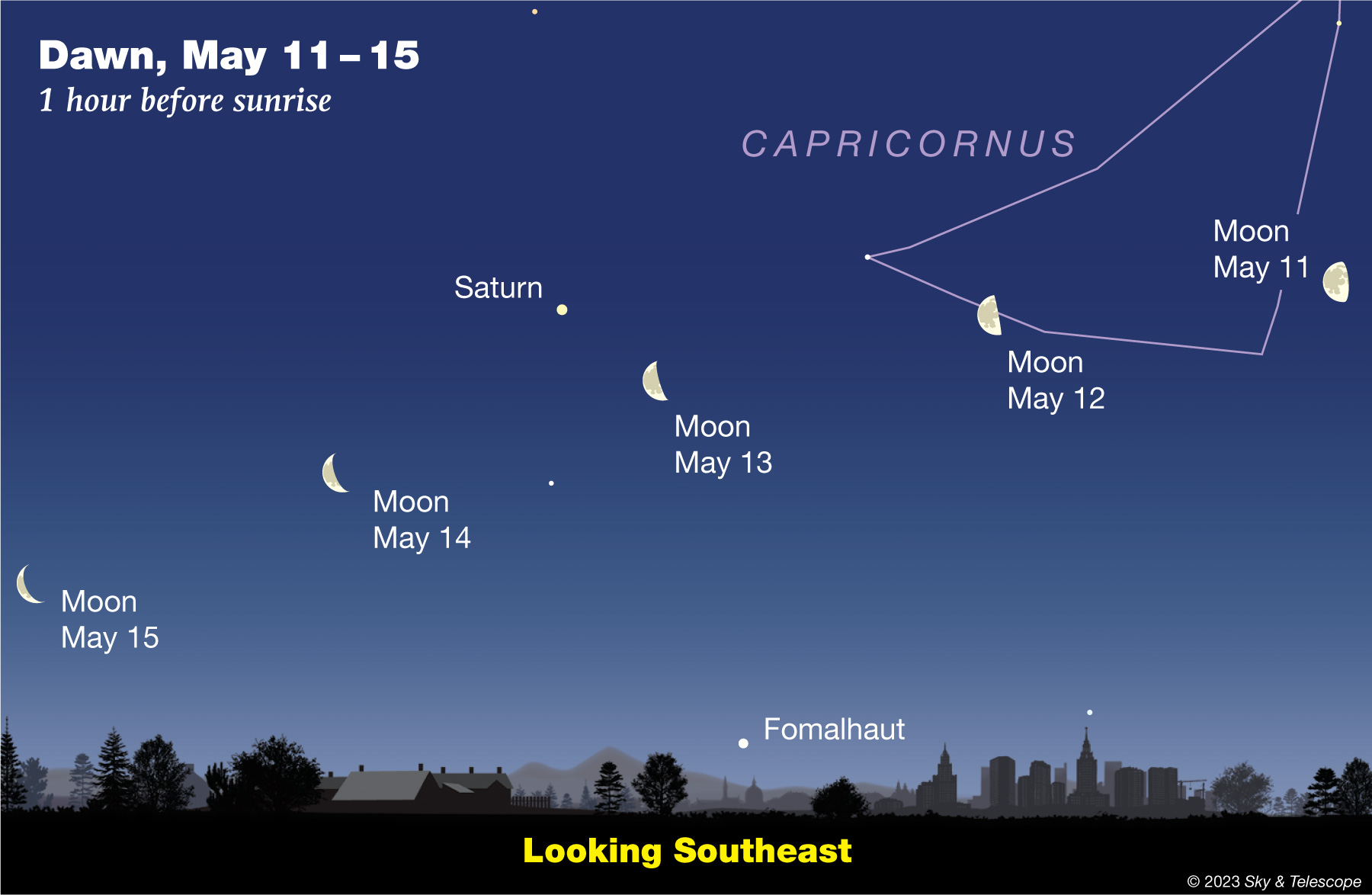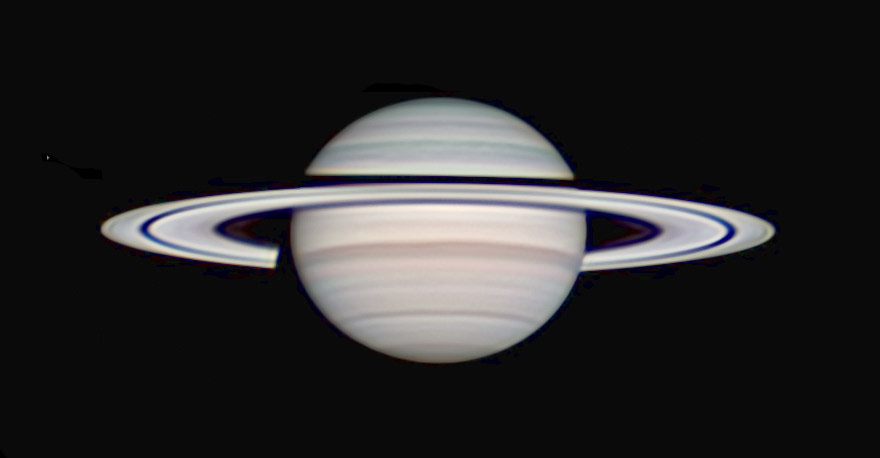FRIDAY, MAY 5
■ Full Moon (exactly full at 1:34 p.m. EDT). About 20 minutes after sunset, look for the Moon rising in the east-southeast. After dark the Moon shines in the center of dim Libra, far below Arcturus and lower left of Spica.
Later in the night, watch for Delta Scorpii to rise about a fist to the Moon's lower left, then for Antares to rise less far to Delta's lower left.
Delta is still magnitude 1.7, about as bright as it has stayed since 2011 after brightening suddenly in 2000, then dipping up and down from 2005 to 2010. If anything, it has been showing a very slight, secular trend upward over the last two decades. When will it stop?
■ A deep penumbral eclipse of the Moon will be visible from eastern Europe, eastern Africa, almost all of Asia, and Australia. Mid-eclipse is at 17:23 May 5th UT. Map and details.
■ Venus remains at about the same height in the western twilight as it's been for a few weeks, but the horntip stars of Taurus behind it (Beta and fainter Zeta Tauri) slide farther below Venus every day.

SATURDAY, MAY 6
■ We're almost a week into May now, but wintry Sirius still twinkles very low in the west-southwest in late twilight, far below Procyon. It soon sets. How much longer into the spring can you keep Sirius in view? In other words, what will be its date of "heliacal setting" as seen by you?
The farther south you live, the later in the season this will be.
SUNDAY, MAY 7
■ Summer is still more than seven weeks away, but the Summer Triangle is making its appearance in the east, one star after another. The first in view is bright Vega. It's already visible low in the northeast as twilight fades.
Next up is Deneb, lower left of Vega by two or three fists at arm's length. Deneb appears about an hour after Vega.
The third is Altair, which shows up far to their lower right after 11 or midnight.
MONDAY, MAY 8
■ Three zero-magnitude stars shine after dark in May: Arcturus high in the southeast, Vega much lower in the northeast, and Capella in the northwest. They appear so bright because each is at least 60 times as luminous as the Sun, and because they're all relatively nearby: 37, 25, and 42 light-years from us, respectively.
TUESDAY, MAY 9
■ Tonight and tomorrow, follow Venus into the dark night with a wide-field telescope or even binoculars and look for open star cluster M35 about 2° to its left or lower left. In binoculars M35 is a dim, biggish gray glow. In a scope, it's a city at night seen from space.
WEDNESDAY, MAY 10
■ Vega is the brightest star in the east-northeast as evening grows late. Look 14° (about a fist and a half at arm's length) to Vega's upper left for Eltanin, the 2nd-magnitude nose of Draco the Dragon. Closer above and upper left of Eltanin are the three fainter stars forming the rest of Draco's stick-figure head, also called the Lozenge. Draco always points his nose to Vega, no matter how he's oriented. He seems curious about it, but he has never made a move on it yet.
The faintest star of Draco's head, opposite Eltanin, is Nu Draconis. This is a fine, equal-brightness double star for binoculars (separation 61 arcseconds, both magnitude 4.9). The pair is 99 light-years away. Both are hot, chemically peculiar type-Am stars somewhat larger, hotter, and more massive than the Sun.
THURSDAY, MAY 11
■ Chi Cygni, one of the brightest long-period red variable stars, should be about at the brightest of its slow, 13-month cycle: probably 4th or 5th magnitude. Look for a faint extra star in the shaft of the Northern Cross. As shown below, Chi ( χ ) forms a long, thin isosceles triangle with 4.0-magnitude Eta ( η ) Cygni (the triangle's thin end, its northeast or upper left end) and a 5.1-magnitude comparison star 1° to Chi's northwest. The triangle points to Gamma ( γ ) Cygni, the center of the Northern Cross.

You can follow Chi's season of fading even farther through the summer and fall using the closeup comparison-star chart, with stars to much fainter magnitudes, in the May Sky & Telescope, page 49.
FRIDAY, MAY 12
■ A gigantic asterism you may not know is the Great Diamond, some 50° tall and extending over five constellations. It now stands upright in the southeast to south after dusk.
Start with Spica, its bottom. Upper left from Spica is bright Arcturus. Almost as far upper right from Arcturus is fainter Cor Caroli, 3rd magnitude. The same distance lower right from there is Denebola, the 2nd-magnitude tailtip of Leo. And then back to Spica. Robert H. Baker may have been the first to name the Great Diamond, in his 1954 book When the Stars Come Out.
The bottom three of these stars, the brightest, form a nearly perfect equilateral triangle. We can call this the "Spring Triangle" to parallel to those of summer and winter. The first to name it such was probably the late Sky & Telescope columnist George Lovi, writing in the March 1974 issue
■ Last-quarter Moon (exact at 10:28 a.m. May 12th EDT). The Moon rises tonight as late as 3 a.m. daylight saving time Saturday the 13th, with Saturn glowing a few degrees to its upper left. As dawn begins on Saturday they're higher and easier to see, as shown below.

SATURDAY, MAY 13
■ On these moonless spring evenings, you can use the Great Diamond to find the big, dim Coma Berenices star cluster. It's one of the nearest clusters at about 280 light-years, which accounts for its apparent size. If you have a dark sky, or binoculars, look halfway from Cor Caroli to Leo's tail-tip Denebola. It spans some 4°, about the size of a ping-pong ball held at arm's length. Its brightest stars form an upside-down Y of an asterism. See Fred Schaaf's Evenings with the Stars column in the May Sky & Telescope, page 45.
SUNDAY, MAY 14
■ With the Moon gone from the evening sky, use binoculars or a telescope to see if you can spot the globular cluster M5, the Serpent's Gem, in Serpens Caput high in the southeast as evening grows late. At magnitude 5.6, it's pretty easy in binoculars a moderately dark sky — if you know exactly where to look. Use the chart and the cute finding tips in Matt Wedel's Binocular Highlight column in the May Sky & Telescope, page 43.
This Week's Planet Roundup
Mercury is hidden deep in the glow of sunrise.
Venus (magnitude –4.2, near the feet of Gemini) is the brilliant "Evening Star" in the west from twilight through late evening. This month it shines about as high in the dusk as it ever gets! It doesn't set until a good 2½ hours after dark.
In a telescope Venus is a dazzling little gibbous globe, 62% sunlit and 18 arcseconds in diameter. It's enlarging a little more every day while waning in phase. It'll be 50% lit in late May and will become a bigger, dramatically thinning crescent dropping lower from mid-June through mid-July.
Mars is crossing Gemini this week, glimmering weakly about 2 fists at arm's length upper left of Venus.
Much closer to Mars's upper right or right are Pollux and Castor. Mars has faded to magnitude +1.4, between Pollux and Castor in brightness. Mars is orange, Pollux is paler yellow-orange, and Castor is white (and telescopically double). Watch their configuration change daily! Mars will line up exactly with Pollux and Castor, to their left, on the evening of May 16th.
Mars is nearly on the far side of its orbit from us, so in a telescope it's just a tiny blob 5 arcseconds wide.
Jupiter hides very low in the sunrise. It'll soon be on its way up for its 2023-24 apparition.
Saturn (magnitude +1.0, in dim Aquarius) is low in the southeast before and during early dawn.

Uranus is in conjunction behind the Sun.
Neptune are out of sight low in the glow of dawn.
All descriptions that relate to your horizon — including the words up, down, right, and left — are written for the world's mid-northern latitudes. Descriptions and graphics that also depend on longitude (mainly Moon positions) are for North America.
Eastern Daylight Time (EDT) is Universal Time minus 4 hours. UT is sometimes called UTC, GMT, or Z time.
Want to become a better astronomer? Learn your way around the constellations. They're the key to locating everything fainter and deeper to hunt with binoculars or a telescope.
This is an outdoor nature hobby. For a more detailed constellation guide covering the whole evening sky, use the big monthly map in the center of each issue of Sky & Telescope, the essential magazine of astronomy.
Once you get a telescope, to put it to good use you'll need a much more detailed, large-scale sky atlas (set of charts). The basic standard is the Pocket Sky Atlas (in either the original or Jumbo Edition), which shows all stars to magnitude 7.6.

Next up is the larger and deeper Sky Atlas 2000.0, plotting stars to magnitude 8.5; nearly three times as many. The next up, once you know your way around, are the even larger Interstellarum atlas (stars to magnitude 9.5) or Uranometria 2000.0 (stars to mag 9.75). And be sure to read How to Use a Star Chart with a Telescope. It applies just as much to charts on your phone or tablet as to charts on paper.
You'll also want a good deep-sky guidebook. A beloved old classic is the three-volume Burnham's Celestial Handbook. An impressive more modern one is the big Night Sky Observer's Guide set (2+ volumes) by Kepple and Sanner.
Can a computerized telescope replace charts? Not for beginners, I don't think, and not on mounts and tripods that are less than top-quality mechanically. And as Terence Dickinson and Alan Dyer say in their Backyard Astronomer's Guide, "A full appreciation of the universe cannot come without developing the skills to find things in the sky and understanding how the sky works. This knowledge comes only by spending time under the stars with star maps in hand."
![]() Audio sky tour. Out under the evening sky with your
Audio sky tour. Out under the evening sky with your
earbuds in place, listen to Kelly Beatty's monthly
podcast tour of the heavens above. It's free.
"The dangers of not thinking clearly are much greater now than ever before. It's not that there's something new in our way of thinking, it's that credulous and confused thinking can be much more lethal in ways it was never before."
— Carl Sagan, 1996
"Facts are stubborn things."
— John Adams, 1770
 2
2









Comments
misha17
May 5, 2023 at 1:52 pm
Stream link for the penumbral eclipse on May 5th:
https://www.youtube.com/watch?v=ctLTQtVXA9U
It's live beginning at 2:45pm EDT
You must be logged in to post a comment.
misha17
May 5, 2023 at 1:54 pm
Of course it will still be available for viewing after the event ends.
You must be logged in to post a comment.
You must be logged in to post a comment.